Um artigo, género Carta ao Editor, submetida a uma revista e ainda sem resposta, sem novidades para os "consumidores" habituais do blog, mas que talvez possa ser de proveito para indivíduos de expressão inglesa. Alguns "autores" pediram-me que traduzisse a Carta ao Editor que publiquei na Acta Reumatológica Portuguesa. Aqui está uma tentativa e uma adaptação.
----------------
Dear Editor,
I will try to resume, using a few words, the theory or theoretical data of a complete method, with so many valour, from those icon of “medical gymnastique”, called Françoise Mézières (1909-1991). I choose this expression method because I considered the “Letter to the Editor” the only manner of exposing the basis of a method that is not scientifically granted (and that means that it has to be considered as a theoretical paradigm, like was formulated by the Thomas Kuhn and Michel Foucault epistemological models).
The comprehension of the Mézières’ method in its truly theoretical and methodological amplitude, implies the comprehension of some rheumatological pathologies as a result of postural deformities. Specially, degenerative pathologies, like arthritis, are related with postural structure.
This same “postural structure” has been being “worked out” using antiques gymnastique methods, that are based in a “strengthening” model. Françoise Mézières resumed that kind of gymnastique, like Yoga or Pilates, in her book called “La gymnastique statique” (1). In the same year (1947), Mézières has realized the “observation” that caused a revolution in the manner of dealing with rheumatological diseases. That “observation” resulted in this conclusion: the body, in a miofascial sense, compounds a global behaviour – called “muscular compensations” – mediated by the existence of global muscular groups of tonic nature, the “muscular chains”. These “chaines”, that were reinvented by a lot of others authors (like Godelieve Denys-Struyf (2), Leopold Busquet (3) or Souchard (4) from the 'Global Postural Re-education'), would explain the body design, in a “statical posture” conception (5), based in the scientifical division of the muscular system between dynamic and static/tonic muscles, and it would create a morphoanalysis’ model of treatment – the Mézières’ method – concentrated in the “global stretching postures of the contracted muscular chains”, using a treatment tripe: deslordosis, desrotation and diaphragmatic liberation.
So, the Mézières’ concept defines postural deformities as “muscular excess” of tonic musculature – principally posterior musculature – describing lordosis as the primary cause of all deformities (6). And Mézières defined an amount of laws in her book “Originalité de la méthode Mézières” (7) (1st: “Les nombreux muscles postérieurs se comportent comme un seul et même muscle”; 2nd: “Les muscles des chaînes sont trop toniques et trop courts”; 3rd: “Toute action localisée, aussi bien élongation que raccourcissement, provoque instantanément le raccourcissement de l’ensemble du système”; 4th: “Toute opposition à ce raccourcissement provoque instantanément des latérofléxions et des rotations du rachis et des membres”; 5th: “La rotation des membres due à l’hypertonie des chaînes s’effectue toujours en dedans”; 6th: “Toute élongation, détorsion, douleur, tout effort implique instantanément le blocage respiratoire en inspiration”) that were important to define revolutionary methodologies of treatment and a novel concept with implications to the physical therapy’s world and sports’ world, whitch was understood by Bertherat (8) and remembered by «Postural Reconstruction»’s Nisand (9).
In a physical therapy’s and sports’ world that is so obsessively stuck to treatment’s methodologies based in the “strengthening model” of the “weak muscles”, the Mézières’ concept implies a radical modification in the therapies’ methods. These have to valorise the relaxation, the tonic inhibition and the global and progressive stretching of the muscular regions with imbalance. For another side, such methodological implications obliges to a serious revision of the System’s operation. A new model of Fitness and “Workout” is needed. In this concept, it is considered the creation of the anti-fitness concept (10).
Dear Editor,
I will try to resume, using a few words, the theory or theoretical data of a complete method, with so many valour, from those icon of “medical gymnastique”, called Françoise Mézières (1909-1991). I choose this expression method because I considered the “Letter to the Editor” the only manner of exposing the basis of a method that is not scientifically granted (and that means that it has to be considered as a theoretical paradigm, like was formulated by the Thomas Kuhn and Michel Foucault epistemological models).
The comprehension of the Mézières’ method in its truly theoretical and methodological amplitude, implies the comprehension of some rheumatological pathologies as a result of postural deformities. Specially, degenerative pathologies, like arthritis, are related with postural structure.
This same “postural structure” has been being “worked out” using antiques gymnastique methods, that are based in a “strengthening” model. Françoise Mézières resumed that kind of gymnastique, like Yoga or Pilates, in her book called “La gymnastique statique” (1). In the same year (1947), Mézières has realized the “observation” that caused a revolution in the manner of dealing with rheumatological diseases. That “observation” resulted in this conclusion: the body, in a miofascial sense, compounds a global behaviour – called “muscular compensations” – mediated by the existence of global muscular groups of tonic nature, the “muscular chains”. These “chaines”, that were reinvented by a lot of others authors (like Godelieve Denys-Struyf (2), Leopold Busquet (3) or Souchard (4) from the 'Global Postural Re-education'), would explain the body design, in a “statical posture” conception (5), based in the scientifical division of the muscular system between dynamic and static/tonic muscles, and it would create a morphoanalysis’ model of treatment – the Mézières’ method – concentrated in the “global stretching postures of the contracted muscular chains”, using a treatment tripe: deslordosis, desrotation and diaphragmatic liberation.
So, the Mézières’ concept defines postural deformities as “muscular excess” of tonic musculature – principally posterior musculature – describing lordosis as the primary cause of all deformities (6). And Mézières defined an amount of laws in her book “Originalité de la méthode Mézières” (7) (1st: “Les nombreux muscles postérieurs se comportent comme un seul et même muscle”; 2nd: “Les muscles des chaînes sont trop toniques et trop courts”; 3rd: “Toute action localisée, aussi bien élongation que raccourcissement, provoque instantanément le raccourcissement de l’ensemble du système”; 4th: “Toute opposition à ce raccourcissement provoque instantanément des latérofléxions et des rotations du rachis et des membres”; 5th: “La rotation des membres due à l’hypertonie des chaînes s’effectue toujours en dedans”; 6th: “Toute élongation, détorsion, douleur, tout effort implique instantanément le blocage respiratoire en inspiration”) that were important to define revolutionary methodologies of treatment and a novel concept with implications to the physical therapy’s world and sports’ world, whitch was understood by Bertherat (8) and remembered by «Postural Reconstruction»’s Nisand (9).
In a physical therapy’s and sports’ world that is so obsessively stuck to treatment’s methodologies based in the “strengthening model” of the “weak muscles”, the Mézières’ concept implies a radical modification in the therapies’ methods. These have to valorise the relaxation, the tonic inhibition and the global and progressive stretching of the muscular regions with imbalance. For another side, such methodological implications obliges to a serious revision of the System’s operation. A new model of Fitness and “Workout” is needed. In this concept, it is considered the creation of the anti-fitness concept (10).
References
Mézières F. La gymnastique statique. Paris: Vuibert, 1947.
Denys-Struyf G. Les chaînes musculaires et articulaires. SBO & RTM, 1978.
Busquet L. Les chaînes musculaires. Kine Plus 1996; 57:19-25.
Souchard Ph-E. Le champs clos. Paris: Maloine, 1981.
Bienfait M. Os desequilíbrios estáticos: fisiologia, patologia e tratamento fisioterápico. São Paulo: Summus editora, 1995.
Mézières F. La révolution en gymnastique orthopédique. Paris: Vuibert, 1949.
Mézières F. Originalité de la méthode Mézières. Paris: Maloine, 1984.
Bertherat T. Le corps a ses raisons. Paris: Éditions du Seuil, 1976.
Nisand M. La méthode Mézières: un concept révolutionnaire. Paris : Éditions Josette Lyon, 2006.
Coelho L. O anti-fitness ou o manifesto anti-desportivo. Introdução ao conceito de reeducação postural. Quinta do Conde: Editora Contra Margem, 2008.










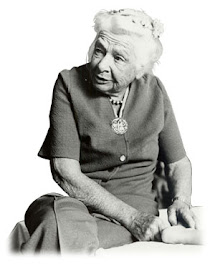





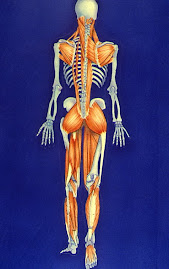
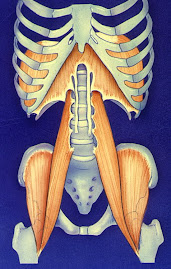





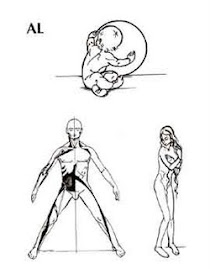


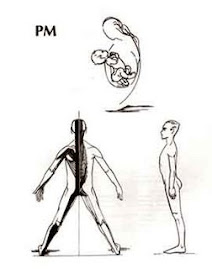





.jpg)




Sem comentários:
Enviar um comentário